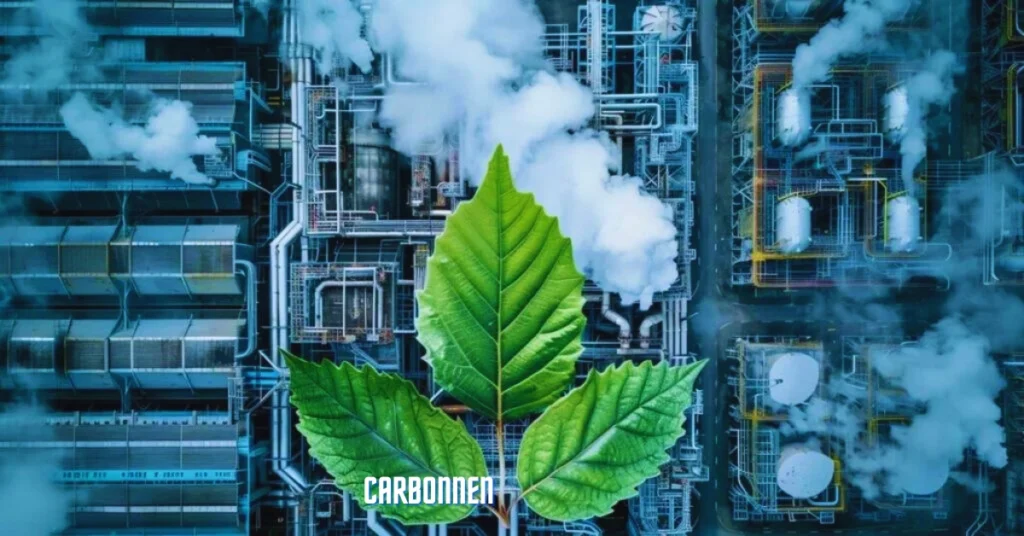Carbonnen, a term that might not be widely recognized, is significant in certain scientific and technological contexts. This article delves into what Carbonnen is, its properties, applications, and potential future developments.
What is Carbonnen?
Carbonnen refers to a specific type of carbon-based material or compound that exhibits unique properties. Its name suggests a relationship to carbon, which is a fundamental element in chemistry known for its versatility. Understanding Carbonnen involves exploring its chemical structure, characteristics, and the contexts in which it is used.
Chemical Structure of Carbonnen
Carbonnen’s chemical structure is crucial in defining its properties. It is composed of carbon atoms arranged in a specific manner that influences its stability, reactivity, and applications. The molecular configuration might involve intricate bonding patterns that contribute to its distinctive features.
Properties of Carbonnen
Physical Properties
Carbonnen exhibits several notable physical properties. It might have a specific color, density, or texture that differentiates it from other carbon compounds. For instance, it could be a solid, liquid, or gas under standard conditions, each form influencing its applications.
Chemical Properties
The chemical properties of Carbonnen include its reactivity with other substances. This reactivity can affect its behavior in different environments, influencing how it is handled, stored, or used in various applications.
Historical Background
The history of Carbonnen is intertwined with the development of carbon chemistry. Understanding its origins involves looking at the research and discoveries that led to its identification and use. This historical context can provide insights into its significance and evolution.
Applications of Carbonnen
Industrial Uses
In industry, Carbonnen might be employed in manufacturing processes or as a component in various products. Its unique properties could make it valuable for specific applications, such as in electronics, materials science, or energy.
Technological Applications
Technologically, Carbonnen might be utilized in advanced fields like nanotechnology or materials engineering. Its characteristics could be harnessed to develop innovative solutions or enhance existing technologies.
Environmental Impact
The environmental impact of Carbonnen is a critical aspect to consider. Its production, usage, and disposal could have various effects on the environment. Understanding these impacts helps in developing sustainable practices and mitigating any negative consequences.
Future Prospects
The future of Carbonnen holds potential for further advancements. Research and development could lead to new applications, improved materials, or enhanced understanding of its properties. Exploring these prospects can highlight the importance of ongoing scientific inquiry.
Challenges and Limitations
Despite its potential, It might face challenges and limitations. These could include issues related to production costs, scalability, or integration with existing technologies. Addressing these challenges is essential for maximizing its benefits.
Comparative Analysis with Other Carbon Compounds
Comparing It with other carbon-based materials can provide a clearer picture of its unique attributes. This analysis helps in understanding its relative advantages and disadvantages, offering a broader perspective on its utility.
Carbonnen in Research
In research settings, Carbonnen is studied for its fundamental properties and potential applications. Investigations into its behavior, interactions, and uses contribute to scientific knowledge and innovation.
FAQ’s
1. What is Carbonnen?
It is a term used to describe a specific carbon-based material or compound with unique chemical and physical properties. Its exact definition can vary depending on the context in which it is used, but it generally involves carbon in a distinctive structural form.
2. What are the key properties of Carbonnen?
The properties of It include its physical attributes (such as color, density, and texture) and its chemical reactivity. These properties determine how It behaves in different environments and influence its applications in various industries.
3. How is Carbonnen used in industry?
In industry, It may be utilized in manufacturing processes, as a component in various products, or in applications requiring specific carbon-based materials. Its unique properties can make it valuable in fields such as electronics, materials science, and energy.
4. What technological applications does Carbonnen have?
It may find use in advanced technologies such as nanotechnology, materials engineering, and other high-tech fields. Its characteristics could be leveraged to develop innovative solutions or enhance existing technologies.
5. What are the environmental impacts of Carbonnen?
The environmental impact of It involves examining its production, usage, and disposal. It is important to consider how these factors affect the environment and to develop sustainable practices to mitigate any negative effects.
Conclusion
Carbonnen, with its distinct properties and applications, represents a fascinating area of study in chemistry and technology. Its significance is reflected in its diverse uses, potential for future advancements, and the challenges it faces. Continued research and exploration will be key to unlocking its full potential.For those interested in learning more about It, further reading and references are essential. Academic journals, textbooks, and research articles provide detailed information and insights into this intriguing subject.
Read More: MovieOrca Update: New Interface Enhancements and User Experience







